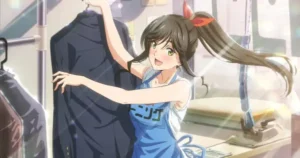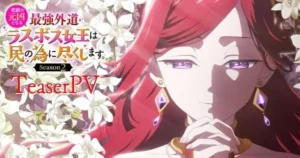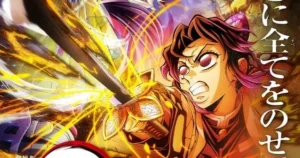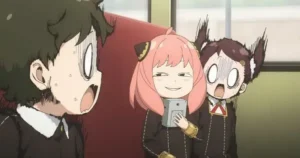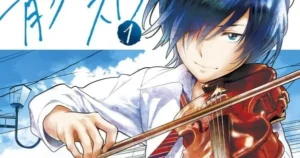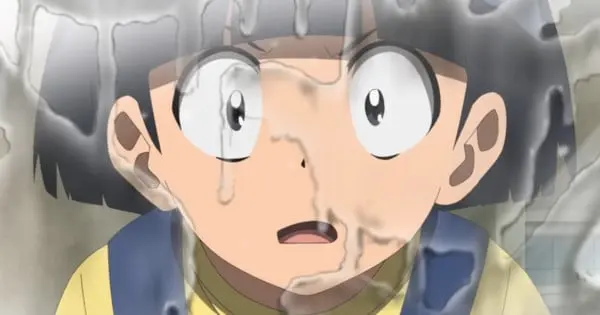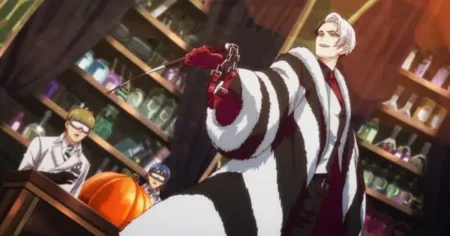Delve into the chilling world of Japanese folklore and supernatural encounters as Hell Teacher: Jigoku Sensei Nube presents its sixth episode, “The Mystery of Teketeke.” This installment plunges students and viewers alike into a modern urban legend, highlighting the series’ unique blend of horror, comedy, and a teacher’s unwavering dedication to protecting his students from the unseen.
The Haunting Legend of Teketeke
Episode 6 centers around the popular and terrifying “Teketeke Legend,” a prevalent internet rumor that grips the attention of Domori Elementary School student Makoto. The legend describes the spirit of a girl who tragically lost her lower body in a railway accident. Now, this vengeful spirit, known as Teketeke, wanders the world relentlessly searching for new legs, dragging her upper body along with a distinct “teketeke” sound.
The chilling aspect of this particular urban legend is the belief that “it will appear to anyone who hears this story within three days”. This ominous prophecy fuels Makoto’s anxiety, as he becomes consumed by terror and fear after encountering the tale.
Makoto’s Descent into Fear
As the three-day countdown begins, Makoto’s apprehension grows with each passing moment. He becomes increasingly frightened by everyday sounds, such as railroad crossings, and perceives mysterious presences around him, blurring the line between reality and the supernatural. The constant dread of Teketeke’s impending arrival consumes his thoughts, pushing him to the brink of panic. Despite Nueno’s attempts to reassure him that Teketeke is merely a myth and to forget about it, Makoto’s fear proves difficult to shake.
The Inevitable Appearance
On the fated third day, Makoto’s worst fears materialize as “it” finally appears before him. Cornered by an inescapable terror, Makoto is driven to desperately cry out for help, illustrating the potent psychological impact of such urban legends when combined with a child’s imagination.
Nube’s Role as the Psychic Protector
Enter Meisuke Nueno, affectionately known as Nube, the psychic teacher with the “Demon Hand” (Oni no Te) in his left arm. Nube’s primary objective is to fearlessly protect his students from the myriad of yokai and evil spirits that plague their town, often risking his own life in the process. In this episode, Nube must confront not only the tangible threat of the Teketeke but also the pervasive fear that an urban legend can instill in a young mind.
While the synopsis primarily focuses on Makoto’s ordeal, Nube’s intervention is crucial in resolving the crisis. His unique abilities and experience with the supernatural position him as the only one capable of truly protecting Makoto from the malevolent spirit.
Broader Context of Jigoku Sensei Nube
Hell Teacher: Jigoku Sensei Nube is a renowned horror-comedy manga written by Sho Makura and illustrated by Takeshi Okano. It was serialized in Weekly Shonen Jump from 1993 to 1999. The original anime adaptation aired from 1996 to 1997, comprising 49 episodes, alongside three movies and three OVA episodes. A new anime series began airing in July 2025, with Ryotaro Okiayu reprising his role as Nube, and Toshiyuki Morikawa returning as Tamamo Kyosuke.
Episode 6, titled “The Mystery of Teketeke,” for the 2025 series, was broadcast on July 30th on TV Asahi’s “IMAnimation W” slot. The original 1996 anime also featured a notable sixth episode titled “Nube’s dead!? The strongest rival, fox demon Tamazou,” which focused on a different supernatural encounter involving a Kitsune attempting to kill Hiroshi. It’s important to note the distinction between the episode order and content of the original and new anime series when discussing specific episodes.
The “Teketeke” legend is a classic example of urban folklore often explored in Japanese horror and supernatural narratives. Its inclusion in Jigoku Sensei Nube underscores the series’ commitment to drawing from a rich tapestry of traditional and modern ghostly tales. Through Nube’s interventions, the series not only delivers scares and suspense but also subtly educates its audience about the various supernatural entities and beliefs prevalent in Japanese culture.

